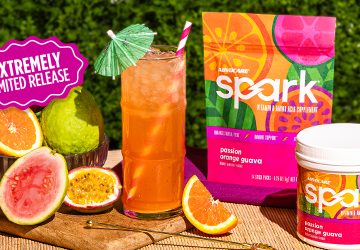
Did you know that one death occurs every 37 seconds in America due to cardiovascular disease? February is American Heart Month, founded in 1964, to increase awareness about cardiovascular disease – which is the leading cause of death for men, women and people of most racial and ethnic groups in the United States It’s an opportunity to reaffirm the commitment to improving heart health for ourselves, our families and our communities.
What are the common risk factors for developing heart disease?
- High blood pressure
- High cholesterol
- Smoking
- Diabetes
- Obesity
- Poor diet
- Lack of physical activity
- Excessive alcohol consumption
- Age-Men over the age of 45 or women over the age of 55
Can I reduce my chances of developing heart disease?
Absolutely. Below are 10 quick tips to help support heart healthy living:
1. ) Schedule a routine physical exam with your primary care physician. As adults, many of us may feel that a yearly physical or check-up is not needed, but regular health exams and tests can help find problems before they start. Physical exams can help detect illnesses and diseases which may result in better outcomes down the road. Here are a few benefits of getting a check-up:
- Provides update of current health status
- Educates you on healthy lifestyle
- Remain current on vaccinations
- Provides health statistics such as weight, height, blood pressure, etc.
2.) Eat healthy. A balanced diet filled with heart healthy foods and regular exercise are equally important components to achieving and maintaining a healthy lifestyle. Let’s review a quick list of foods deemed heart healthy:
- Fatty fish: Consuming foods that are high in omega-3 fatty acids, such as fatty fish, can help promote cardiovascular health. Research studies have shown that omega-3 fatty acids as part of a healthy diet can help decrease triglyceride levels, aid in the reduction of atherosclerotic plaques and may help lower blood pressure.1 Salmon, lake trout, mackerel, herring, sardines and tuna are all good sources of protein and low in saturated fat
- Tree and ground nuts: Tree and ground nuts are considered one of nature’s top foods to promote heart health, due to their strong nutritional profile including unsaturated fats, omega-3 fatty acids, Vitamin E, fiber and plant sterols. Foods that are high in fiber and plant sterols (i.e. tree nuts and legumes) may help lower blood cholesterol levels and thereby the risk of heart disease. Walnuts are considered to be the number one heart healthy nut. Other nuts containing heart-healthy nutrients include almonds, macadamia nuts, hazelnuts and pecans.
- Berries: Berries contain antioxidants, polyphenols, fiber, Vitamin C and manganese, which specifically help in your body’s natural reduction of free radical levels. Raspberries, blueberries, blackberries, strawberries and acai berries are small, but mighty, in the realm of heart health.
- Coarse or steel-cut oatmeal: Oatmeal is a good source of fiber, omega-3 fatty acids, folate and potassium. Oatmeal is also high in soluble fiber, which aids in reduction of the absorption of dietary cholesterol into the blood stream.
3.) Get Active. Fitting consistent physical activity into your weekly routine can help lower the risks of cardiovascular disease. According to the Office of Disease Prevention and Health Promotion (ODPHP), physical activity is the key to improving the health of our nation. Studies have shown that incorporating consistent physical activity into your weekly routine can help reduce risk factors in the development of heart disease and stroke. The agency’s publication, Physical Activity Guidelines for Americans, suggests five types of activity, including aerobic and muscle strengthening.2
- Aerobic activity causes an increase in heart rate and is also referred to as endurance or cardio activity. A brisk walk, water aerobics, ballroom dancing or gardening are all examples of moderate activity, while vigorous intensity includes activities such as running, jogging, jumping rope, swimming laps or hiking uphill.
- Muscle-strengthening activity causes your body’s muscles to work or hold against an applied force or weight, such as weightlifting or resistance training. It is important to target all major muscle groups of the body – legs, hips, back, abdomen, chest, shoulders and arms.
4.) Maintain a healthy weight. According to the newest guidelines released by the American Heart Association, weight loss is suggested as a strategy to prevent heart disease and stroke.3 A few of the best techniques for weight loss include eating fewer calories than your body needs, exercising more and changing unhealthy behaviors.
5.) Quit smoking and stay away from secondhand smoke. The American Heart Association reports that the most preventable cause of premature death in the United States is smoking.4 Cigarette smokers have a higher risk of developing atherosclerosis (the formation of fatty plaques in the arteries), several types of cancer, and lung disease. The health benefits start almost immediately after a person quits smoking and within a few years of quitting, the risk of stroke and coronary artery disease will be similar to that of a non-smoker’s
6.) Control your cholesterol and monitor your blood pressure. When cholesterol levels are elevated, damage can be the result. As cholesterol circulates in the blood, blood levels increase, forming deposits of fatty plaques that lead to the narrowing and hardening of blood vessels, in a process called atherosclerosis. If blockage to an artery occurs, a heart attack or stroke may result.
7.) Sleep hygiene. The Centers for Disease Control and Prevention recommends that adults (including older adults) get at least 7-9 hours of sleep per night, yet nearly 40 percent of Americans get only six hours (or less) of sleep per night.5 Sleep quality impacts various factors of overall health and wellness including:
- Hormone production
- Energy levels
- Mood
- Cardiovascular, immune and brain health
8.) Drink alcohol only in moderation. Heavy drinking is linked to a number of poor health outcomes, including heart conditions. Excessive alcohol intake can lead to high blood pressure, heart failure or stroke. Excessive drinking can also contribute to cardiomyopathy, a disorder that affects the heart muscle.
9.) Manage stress. Creating your own stress-management strategy is a great place to start. Stress can get in the way of your health and life goals. It can lead to emotional eating, poor sleep and the adoption of more sedentary behaviors. In order to achieve a healthier lifestyle, you must be able to manage stress levels.
10.) Supplementation. Even some of the most balanced diets are filled with nutritional gaps. Consistently eating healthy food is the desired goal to help promote health, but food alone may not provide the total daily Recommended Dietary Allowances you need for sufficient nutrition. Nutritional supplements can be made with ingredients that assist with healthy aging, metabolism, weight management, stress management, sleep and athletic performance.
References:
References:
1. Kris-Etherton PM, Harris WS, Appel LJ; American Heart Association. Nutrition Committee. Fish Consumption, Fish Oil, Omega-3 Fatty Acids, and Cardiovascular Disease.
2. U.S. Dept of Health and Human Services, 2018, Physical Activity Guidelines for Americans, 2nd Ed., pg. 30.
3. ACC/AHA Guidance for Preventing Heart Disease, Stroke Released. (2019). American Heart Association. https://newsroom.heart.org/news/accaha-guidance-for-preventing-heart-disease-stroke-released
4. Smoking, High Blood Pressure and Your Health. (2010). Www.heart.org. https://www.heart.org/en/health-topics/high-blood-pressure/changes-you-can-make-to-manage-high-blood-pressure/smoking-high-blood-pressure-and-your-health
5. CDC. (2017). CDC – How Much Sleep Do I Need? – Sleep and Sleep Disorders. CDC. https://www.cdc.gov/sleep/about_sleep/how_much_sleep.html





